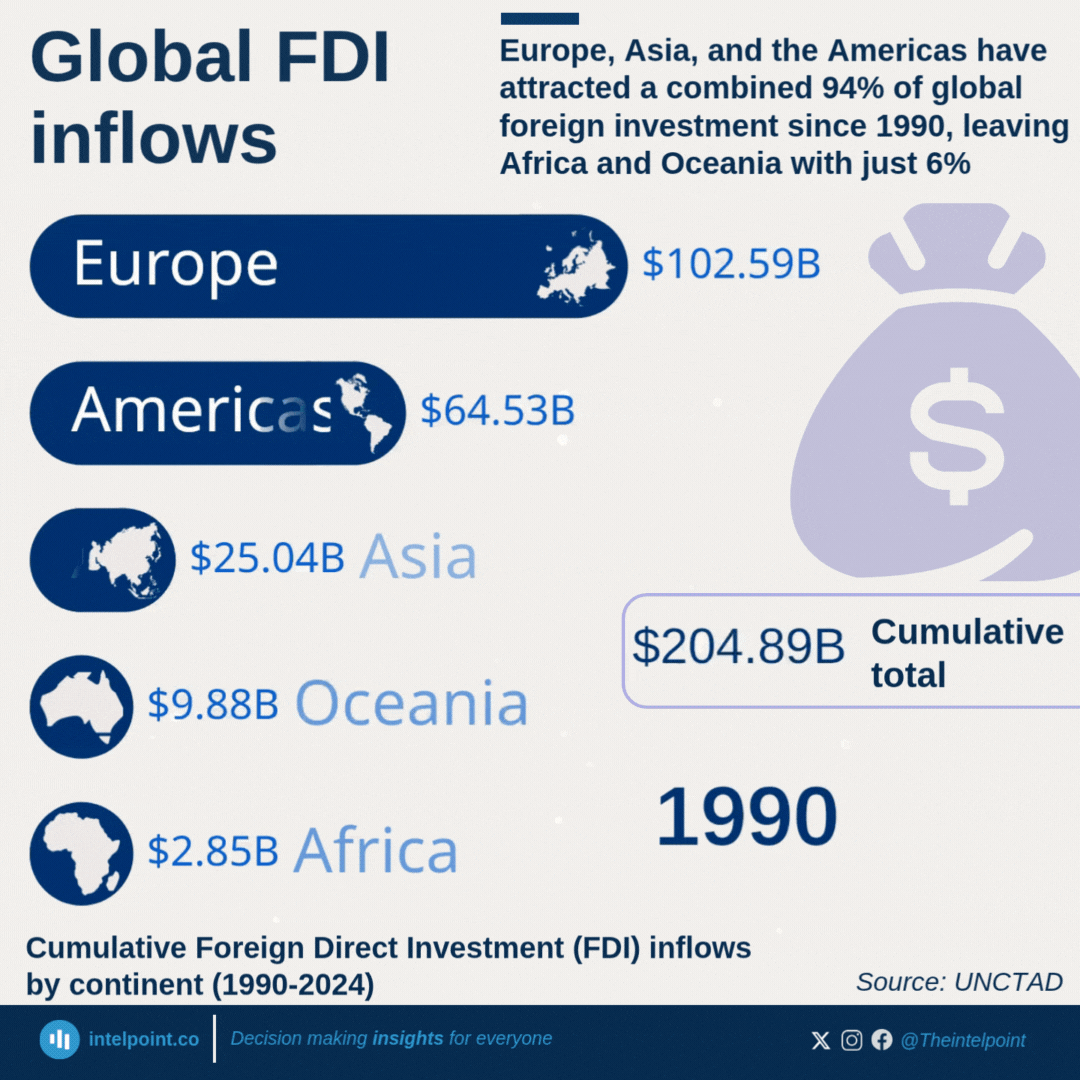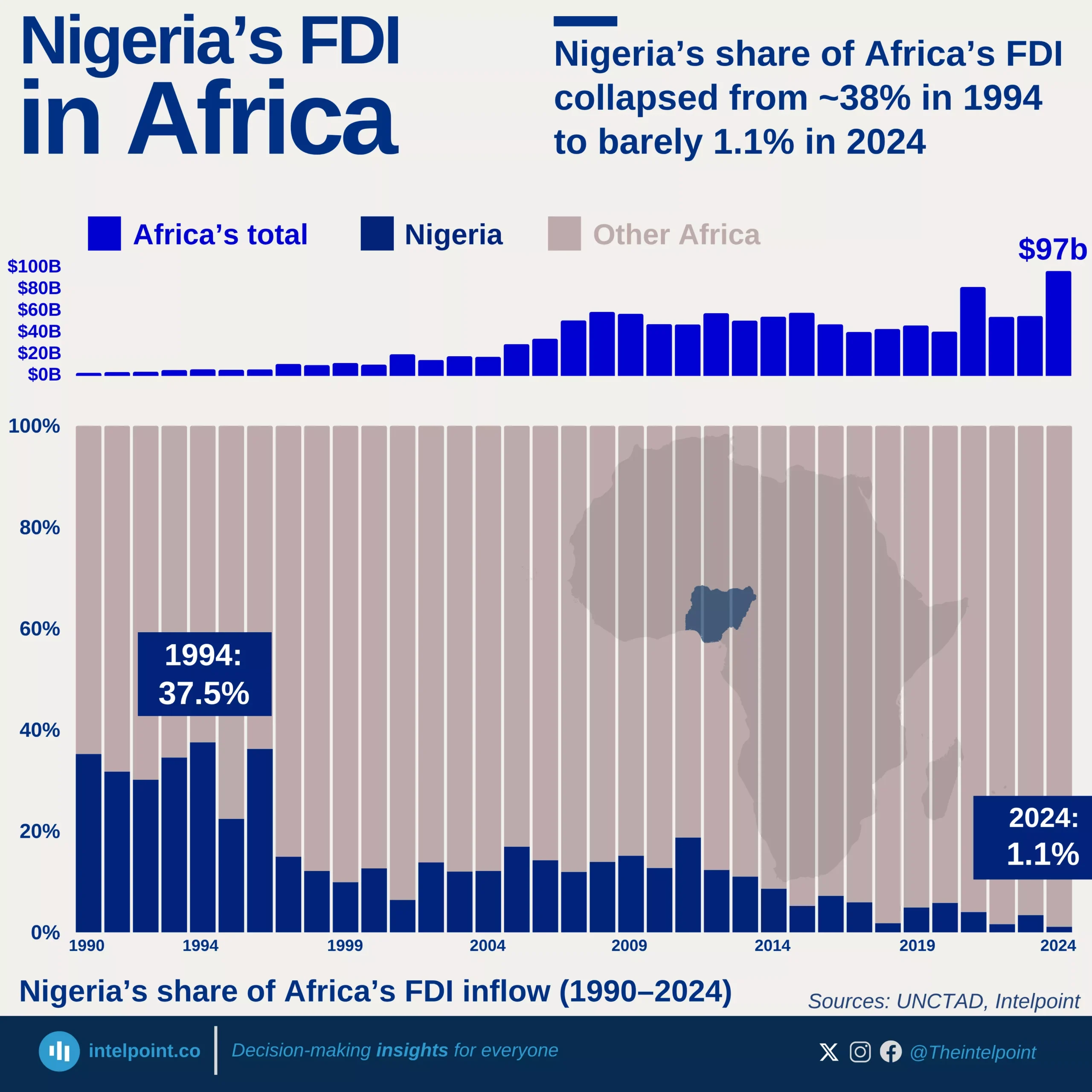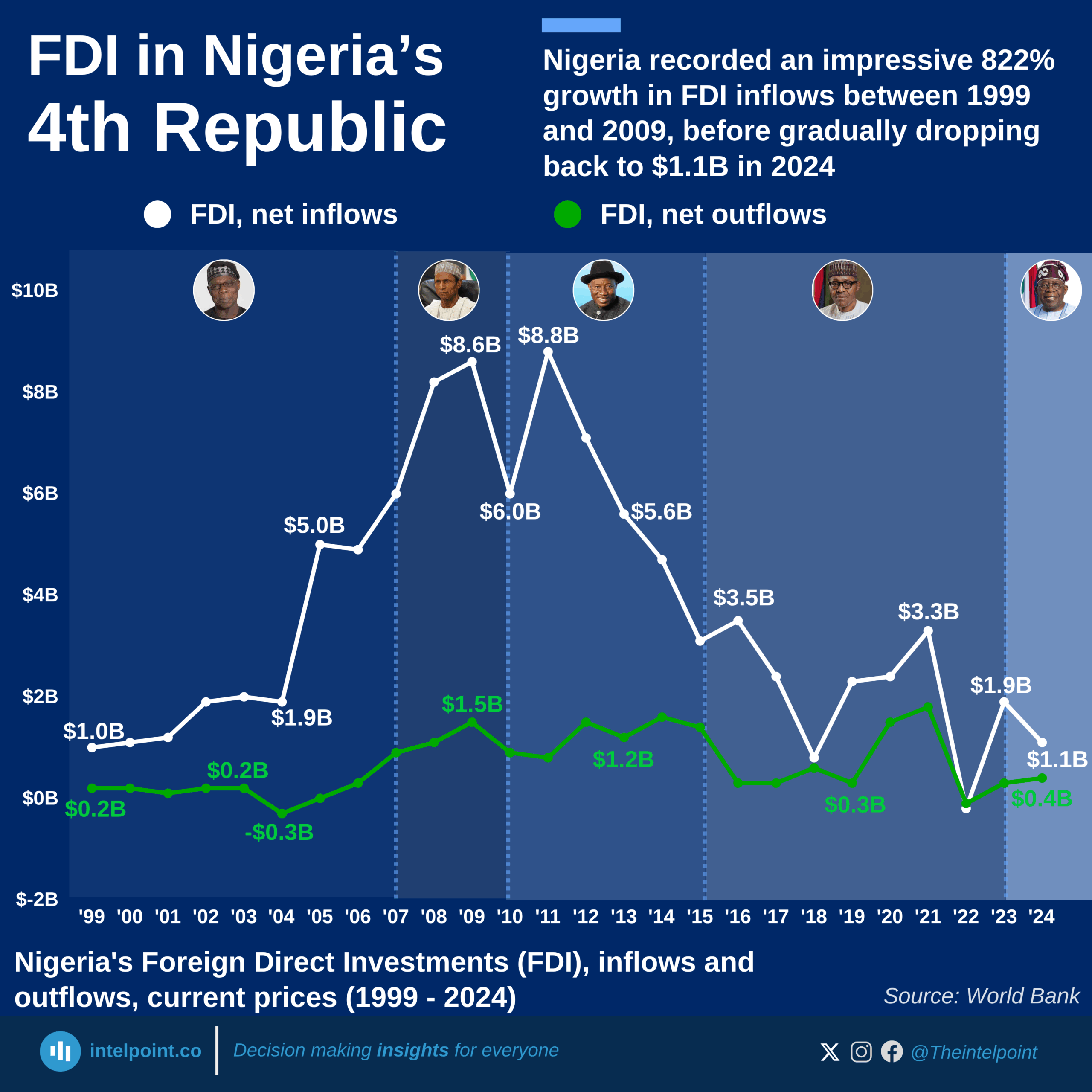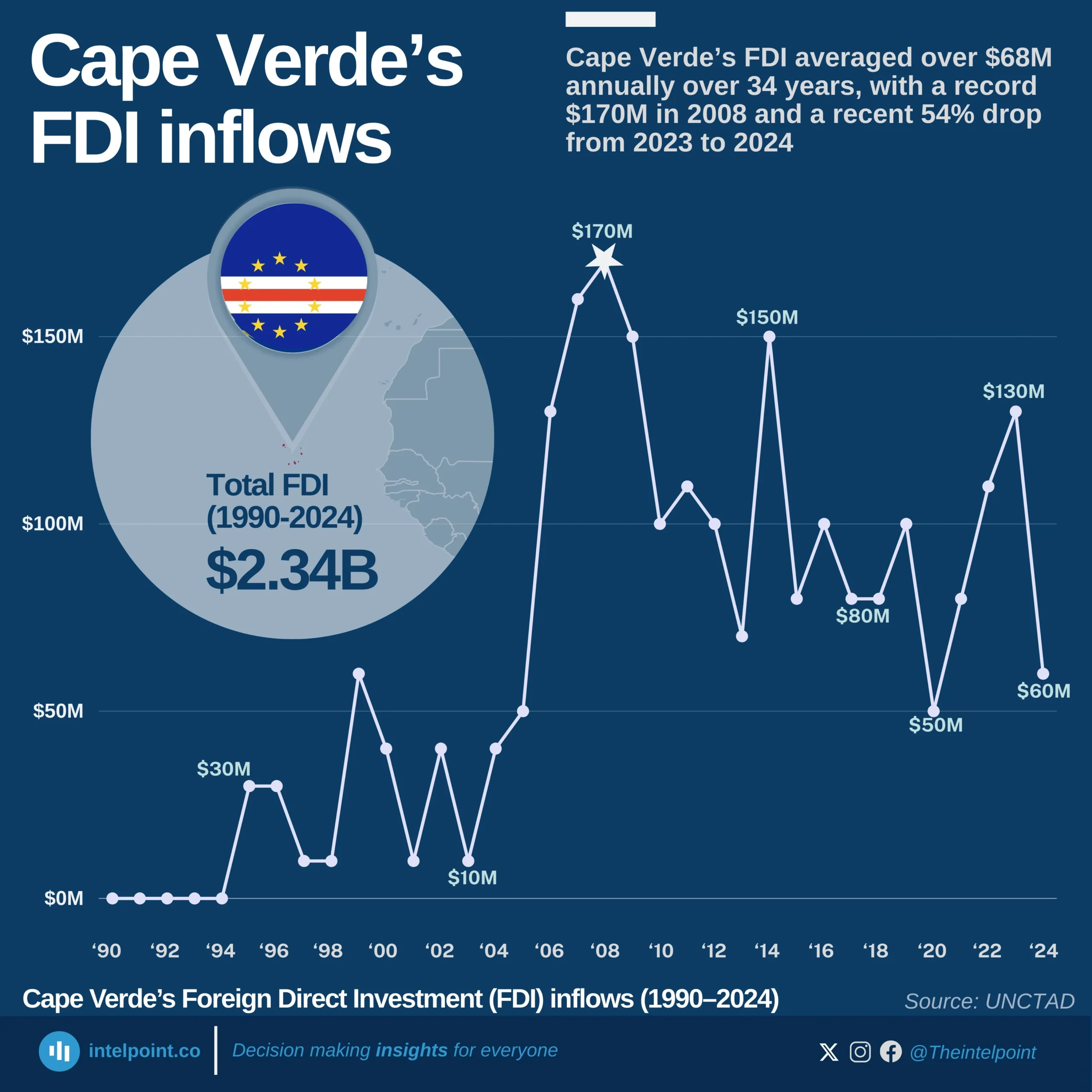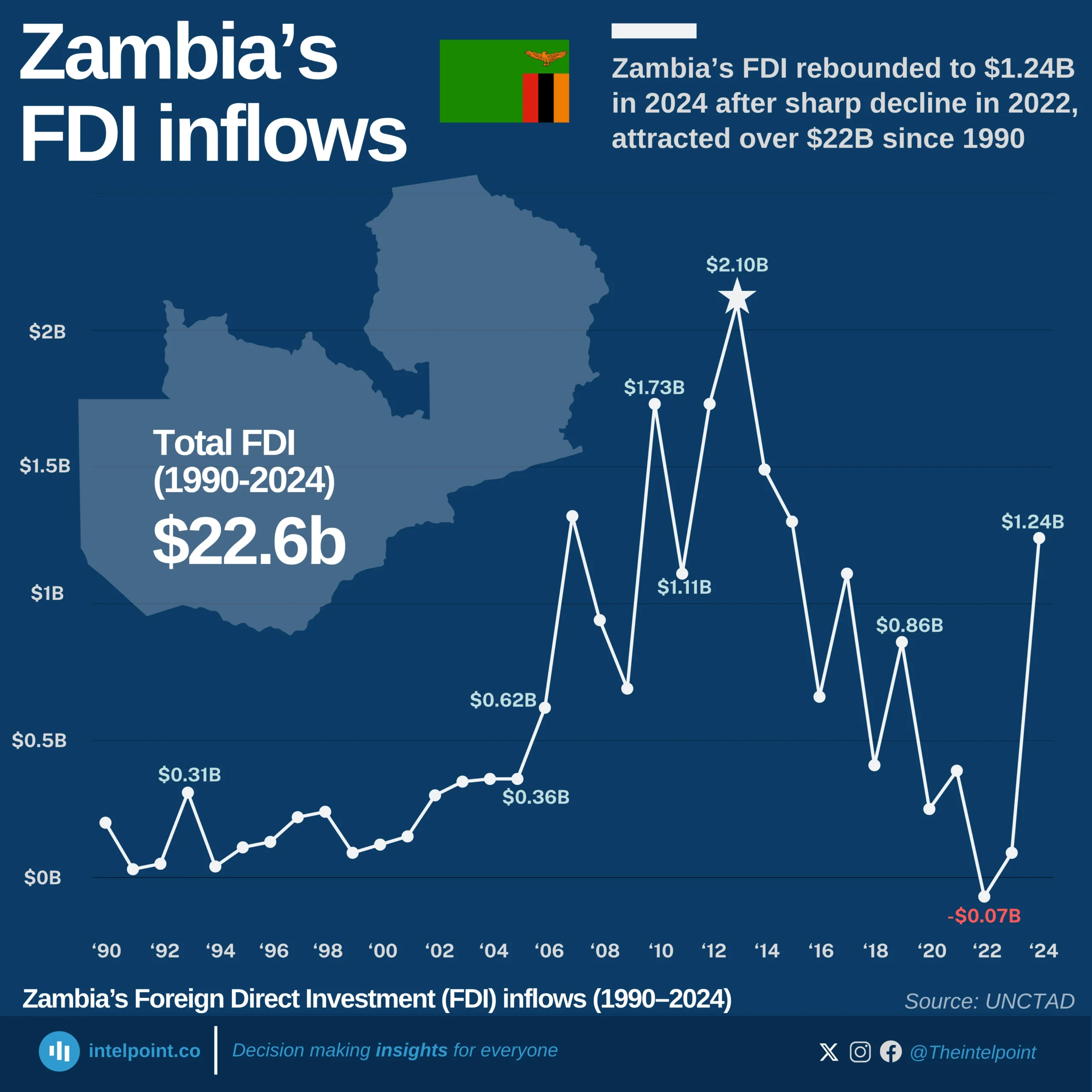Morocco’s FDI inflows trend from 1990 to 2024 reveals a wave-like pattern of rises and drops. After a quiet start in the early ‘90s, inflows sharply accelerated in the early 2000s, most notably between 1999 and 2001.
Two major peaks occurred in 2014 and 2016, with inflows crossing the $3.5 billion mark. However, these highs were followed by visible declines, especially between 2018 and 2020. While the years after 2020 reflected some volatility, Morocco appeared to be stabilising again in 2024 with an upward tick.
Overall, the chart shows how Morocco’s FDI landscape has been shaped by cycles of investment surges and slowdowns over the decades.
